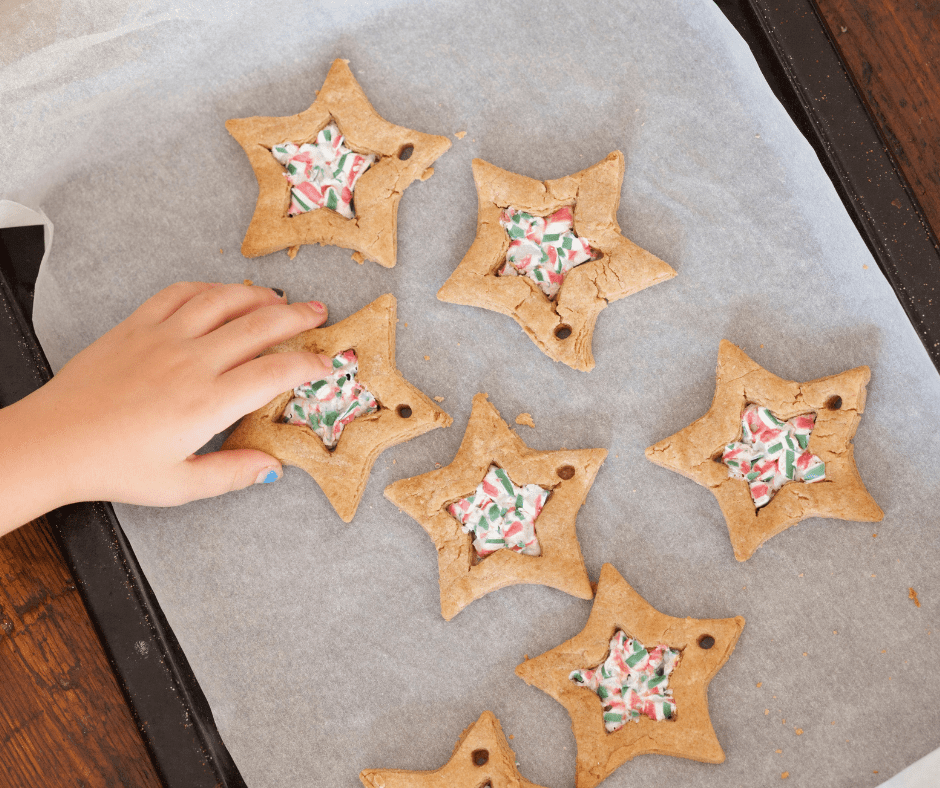The UK’s population is growing rapidly, and the over 60s make up over 20% of us. With people living longer, there is expected to be over 3 million people aged 85+ by 2041. The number of elderly people living in residential care homes is also set to increase dramatically, but are they getting the quality of life they deserve in social care?
The ever-growing population means an increasing demand on the social care sector, and while we often think of care in a physical sense, mental health care is of equal importance and can often be overlooked due to not recognising the signs. In recent years, there has been a huge emphasis on recognising mental health and just how big an impact it can have on our lives.
The World Health Organisation reported that around 15% of those aged 60+ suffer from a mental disorder. They have also said that mental health problems are often under-identified by both healthcare professionals and older people themselves. This could be because of the stigma surrounding these conditions contributes to making people reluctant to seek help.
Those in care homes may be far more susceptible to these challenges for a number of reasons. Depression and loneliness are extremely common in the elderly, and being in an unfamiliar setting or environment can often be distressing (particularly for those who also have Dementia), so the initial transition from independent life into a social care setting is one of the most important times to be conscious of the possible signs of declining mental health.
Despite the fact we’re all living longer and staying active into later life, there is still a stigma around getting older. We shouldn’t fear this, and the care that is provided to the elderly should reflect this key message. I’m sure most of us would struggle with the thought of getting older if it means we lose the ability to do certain things independently, which is why it is important that those in care experience the best quality of life possible, maintaining both their dignity and their happiness.
A person-led approach to care is the best way to achieve this. The person-led approach is all about understanding the individuals’ needs and providing a unique care routine that works for them, created through collaboration with the person utilising your service. What works for one person may not for another, so here are five ways you can help improve the mental health and well-being in elderly care homes
The best way to keep the mind healthy is to keep it stimulated and active, which is why it’s so incredibly important to encourage elderly residents to participate in a number of activities throughout their week. A sign that they might not be feeling themselves is a sudden disinterest in socialising, engaging in activities or doing things they usually enjoy, so if you notice someone is not joining in as much, consider why that is and think about how you could shake up their routine.
Better still, speak to them and find out what things they would enjoy or are in the mood to do. Activities should be of genuine personal interest to individuals in order to really enrich their lives, and what one person likes, the other may not. For example, not all activities will be suitable for every resident. It’s important that everyone can enjoy a range of different activities.
Just because someone has moved into a social care setting, doesn’t mean they instantly lose their own individualism and identity, it’s important for carers to strongly encourage those they support to continue to embrace their personal identity.
If you want to improve mental health and well-being in elderly care homes, then simply having meaningful conversations about someone’s past, looking through old photos, and sharing stories with them, will allow carers to connect with those they support on a much deeper level; as a person rather than a “patient”. By finding out more about someone’s personal history and life, carers can better cater to their individual needs in care, and allow them to feel like they are still living their own life or have a sense of independence.
Dignity is extremely important to identity, and elderly people in care should be encouraged to do as much for themselves as possible, wherever possible. This can be as simple as picking out their clothing and deciding what they want to do or eat that day.
Relationships are an integral part of who we are and therefore play a huge role in the improvement of mental health and well-being in elderly care homes. As we have mentioned, loneliness is one of the primary causes of depression in the elderly population, and for some, their carer may be the only person they see or speak to all day. You should encourage the people in your care to stay social. This includes visits from family and friends, or speaking on the phone/video calling if they are not able to come in person.
Having familiar faces in a care setting can be extremely helpful for someone trying to relax and feel more at ease, especially if they are in a new environment for the first time. It’s good to encourage friendships with others in care, and to form bonds with people they have daily interactions with. If someone suddenly stops wanting visitors or to interact and engage with other residents, this is almost definitely a sign that they are not quite feeling themselves or are feeling anxious and/or depressed.
If someone is dealing with pain physically, this often affects the mind too. It is important to be incredibly thorough when checking in with those you support, as pain may not simply and clearly present itself to the eye. A lot of people can find talking about any issues embarrassing, so encourage them to open up about any discomfort they may be experiencing.
Note-taking on physical ailments is important so you can provide the right care and escalate to a healthcare professional if necessary. This means you can tailor the care they receive and any activities they do to ensure maximum comfort and well-being.
Everyone’s mood fluctuates, and this could be for a number of reasons which are all very normal. It could be they’re simply not a morning person or they get cranky when they’re hungry, but it’s important to recognise when dips in mood could be an indication of something more serious.
In order to improve mental health and well-being in elderly care homes, it’s worth keeping track and logging the changing moods of the people you support. You can gain a deeper understanding of trends (e.g. low mood linked to medication) or whether you need to address something else.
A person-centred approach to care requires carers to really get to know and understand the individual needs of those they support, so that they can quickly notice personality changes that might be a sign of depression or other mental health issues.
Those are our 5 ways to improve mental health and well-being in elderly care homes. At Nourish, we’re all about keeping people connected and promoting community-centered care. For more information on how we can help improve the health and wellbeing in your care homes, get in touch with the team or book a demo.
Digital tools are increasingly vital to support social care providers, improve care and help people to live fulfilled lives.
The government has extended their target of 80% of CQC registered providers using digital social care records from their Assured Suppliers List (ASL) to March 2025. At Nourish Care, we’re at the forefront of this movement, spearheading partnership working to transform the way social care technology companies collaborate.
The first step was replacing paper records. The government extended both the time frame for care providers to utilise the available digitisation funding, and the standards software suppliers have to meet to become members of their ASL. There are many more innovative tools available to help you deliver person-centred care. Many providers already use technology that prevents falls, supports pain management or simplifies medication records, alongside their digital social care records.
But this can lead to multiple sign-ins for your team which complicates rather than simplifies your processes. If you’re using different systems, it’s important that they can communicate with each other and share data. It means your team always has the most accurate and up-to-date information about the people you support.
This is where digital integration comes in. At Nourish, we’re accelerating the digital transformation journey by working together with other experts to push the boundaries of what’s possible with health and social care technology.
Integrated technology simply means the different tools you’re using are joined up and coordinated. This avoids duplication of effort from having to input data into other systems. It also centralises information, preventing the siloing of information about the people who draw upon your support.
Integrating technologies together can revolutionise the way you deliver care. By connecting different systems and sharing information automatically, you can capture data easily on the go. This improves the quality of care, saves time and allows you to tailor care to each person’s life and needs.
Technology should never be a burden. You shouldn’t have to think about how your different systems are talking to each other, it should happen seamlessly. That’s why we work collaboratively with our partners as part of our Nourish Partner Programme. Together, we have the expertise to align all our technologies to create cutting-edge solutions.

Using Nourish alongside other platforms means that data must only be entered into one system as it automatically feeds into others. This syncing of information minimises the risk of errors, reduces administrative burden and allows care teams to spend more time on face-to-face care.
At Nourish, we believe in the power of integration and collaboration. That’s why we’ve partnered with the NHS, care authorities, change management solutions, and other leaders in the care sector to shape both our product and the future of digitally enabled healthcare.
Our Nourish Partner Programme can help with:
Denise Tack, Director of Partner and Business Engagement at Nourish Care“Our family of partners really understand the health and care sector and are carefully selected. Depending on the specific needs of your organisation, we can support you to choose the partners most suited to your individual needs. We’re working tirelessly together to strive for better automation that becomes part of everyday care.”
Nourish integrates with established NHS systems, like GP Connect, which gives care teams insight into a person’s GP records and medical notes in real time. This empowers care teams to make better, more informed decisions and provide safer and more effective care.
When using digital tools together, it can provide crucial information about where improvements can be made. For example, if you’re looking to implement falls management technology, integrations can link valuable information with Nourish to give care professionals access to someone’s history of falls. This means you can develop care plans and strategies to avoid falls in the future.
Let Nourish be your guide as you navigate the digital possibilities in your organisation. Together, we’re creating a more connected, efficient and compassionate experience for everyone. Find out more about how Nourish can enhance the care you provide by booking a personalised demo with our team.
The festive season is a special time to spread joy, warmth, and cheer. For care services, creating a festive atmosphere and engaging the people you support in Christmas activities is an invaluable way to foster a sense of community and happiness.
Organise crafting sessions to create handmade decorations, ornaments, and personalised Christmas cards. Engaging the people you support in creative endeavours promotes a sense of accomplishment and provides an opportunity to reminisce about past holidays.

Music is a universal language that resonates with everyone. Arrange musical sessions or invite local performers for a festive sing-along, allowing the people you support to enjoy the music of the holiday season.

Hosting baking sessions where people can participate in making cookies, gingerbread houses, or decorating cupcakes adds a delightful touch to the season. The scents of freshly baked goods evoke nostalgia and create a warm, homely ambiance.

Encourage holiday-themed storytelling or reading sessions. Engaging the people you support in classic Christmas tales or sharing personal stories of holiday memories is a wonderful way to invoke the spirit of the season.

Host movie nights showcasing classic Christmas films. Create a cosy atmosphere complete with popcorn and blankets, providing the people you support with a chance to enjoy the classic tales of the season.

Involve the people you support in decorating the care home with festive decorations. This activity not only uplifts spirits but also encourages a sense of ownership and pride in the communal space. There are creative ways to work around the varying abilities of the people you support, such as asking those who spend a lot of time in their bedroom to choose a decoration or using aids such as wheelchairs to enable the people you support to get involved. You can also create snowflakes using paper or paint decorations that can by hung on the tree.

Arrange visits from local school children, choirs, or theatre groups. These interactions bring the community closer together and encourage a connection between the community and the people you support.

Facilitate a gift exchange or Secret Santa activity, allowing the people you support to share presents and partake in the joy of giving during this special time of the year. Gifts don’t have to cost anything; they can be homemade or photographs.

Organise a festive photoshoot for the people you support. Using props, hats or just the person, create a special memory for the people you support and their loved ones.

Incorporating these Christmas activities into care services creates an environment filled with joy and togetherness. It not only celebrates the holiday season but also ensures that the people you support feel cherished, engaged, and connected with the festive spirit. This thoughtful curation of activities aims to make this Christmas a heart-warming and memorable experience for all in the care community.
Hanukkah, also known as the Festival of Lights, is a beautiful and meaningful holiday that is celebrated by Jewish communities around the world. For care homes, it’s an opportunity to create a warm and inclusive environment where the people you support can participate in Hanukkah-themed activities, learn about traditions, and enjoy the festive spirit. Here are some creative activity ideas to make Hanukkah special.
The centrepiece of Hanukkah is the lighting of the menorah, a nine-branched candelabrum. The people you support can gather to light the menorah’s candles each night, recite blessings, and sing traditional songs. This symbolic ritual fosters a sense of community and tradition.
Organise a crafting session where the people you support can make their own menorahs or dreidels (spinning tops). Provide art supplies and guidance to create personalised Hanukkah decorations. These crafts can be displayed around the care service to add to the festive atmosphere.
Arrange storytelling sessions about the history and significance of Hanukkah. Share tales of the Maccabees and the miracle of the oil that burned for eight days. Engaging discussions and storytelling can help connect with the holiday’s cultural and historical roots.
Hanukkah is known for its delicious foods, such as latkes (potato pancakes) and sufganiyot (jelly-filled doughnuts). Host a cooking class or bring in a chef to prepare these traditional treats with the people you support. Sharing a meal together can be a lovely way to celebrate.
Invite musicians or local choirs to perform Hanukkah songs and melodies. Music has the power to evoke memories and emotions, making it a wonderful addition to the festivities.
Organize Hanukkah-themed games like a dreidel-spinning competition or Hanukkah bingo. These games are not only enjoyable but also an opportunity to educate about Hanukkah traditions and symbols.
Screen Hanukkah-themed movies or documentaries about Jewish culture. This can be a relaxed and enjoyable way for everyone to learn more about the holiday or celebrate.
Hanukkah emphasizes the value of giving and helping others. Set up a donation station for the people you support to contribute to charitable causes. This act of tzedakah (charity) aligns with the spirit of Hanukkah.
Transform your care service into a festive space with Hanukkah-themed decorations. Blue and white colour schemes, menorahs, and Star of David motifs can be used to create a cheerful atmosphere.
Celebrating Hanukkah in care homes provides an opportunity for the people you support to come together, learn, and embrace the joy of this special holiday. Through a combination of traditional activities, cultural enrichment, and community building, care homes can ensure that the people you support have a memorable and heart-warming Hanukkah celebration. These activities promote a sense of togetherness and the sharing of traditions, creating a meaningful experience for everyone involved.
We spoke to Stephanie at Haddon House, Glenholme Care about their integration with Camascope (formerly known as VCare).
Glenholme Care Group support many different care types from young people and adults with learning disabilities to mental health to senior care. They have 17 services located in the South East of England and have been a Nourish user since early 2021. Haddon House, one of the services within Glenholme Care Group is a specialist residential care service that supports people with learning disabilities, including those with autism, physical disabilities and complex needs.
Nourish launched their eMAR integration with Camascope in summer 2022 and Glenholme Care Group switched on the integration with Camascope in June 2022.
The Nourish integration with Camascope removes the need for double entry for medication by sharing information between the platforms, surfacing key medication information alongside daily care records to drive better care outcomes. By integrating the two systems, all medication administered will appear on the daily timeline and within the Care Plan, what’s more the integration provides first response teams with contextual medication information readily available via the Nourish Emergency Information Pack.
Haddon House saved time on recording entries of the medication administered for the people they support. They also found that after switching on the integration that the accuracy of their care notes has increased as the care team only needed to access one platform.
“The integration has helped as we are able to monitor medication administration more efficiently, from a administration point of view, using one system, rather than having to switch between the two.” Stephanie Wagstaff, Haddon House
Having all this information visible in the Nourish app ensures that all medication notes are visible to all staff members on shift. The Seamless Handover feature in Nourish also means important information from previous shifts can also keep up to date with essential information. With access to clear records that show the medication administered and at what time means care teams have a smooth and thorough handover with no information being missed.
“Medication being administered is more accurate and person centred within the daily interactions, rather than staff just recording ‘medication administered’.” Stephanie Wagstaff, Haddon House
Haddon House found the main benefit of using the Nourish and Camascope integration to be the more accurate care records. The more accurate care records gives a deeper understanding of the people supported by Haddon House and the events that surround medication administration. All of this new information enables Haddon House to better evidence the medication administered in their care service.
Though the integration itself requires some technological knowledge, setting up the integration and getting going with it was fairly easy for the Haddon House team. Nourish Support are available 24/7 and are always on hand to assist with queries regarding the Nourish platform.
Care owners understandably want to have peace of mind that everything is under control and running smoothly within their care service. The Compliance & Audits feature within Nourish can be used in a number of different ways to provide great insight into your care service depending on your individual requirements.
If you’re a hands on care owner, you may want to be able to look into detail at exactly how your care service is performing, and the ways in which it is improving people’s lives, or simply see the bottom line to understand how your care service is doing, and what needs to be done to continue to grow and improve.
Compliance and Audits can do just that, and it can be tailored to suit the needs of your care service. Here’s just a few ways care owners can utilise this feature.
Every care service is run differently, and the flexibility of the Nourish system allows you to run things the way you want. Audits can look into both the running of the care service itself as well as the residents health and wellbeing, to ensure that everything is running smoothly.
You can choose from a bank of audits to understand specific areas, or create bespoke audits based on things that are more specific to your care service. Owners may wish to identify areas such as spending, predict CQC ratings or assess staffing needs.
Care owners can then add bespoke reports that are tailored to their needs which can assess overall quality of care being provided. They may want to report on failed admissions, GP visits or number of completed records by staff, to name just a few.
These audits allow care owners to spot check certain areas where they may wish to improve or change, and it allows them to gain a better understanding of what works and what doesn’t.
Care owners are bound to be busy, and the thought of having to sit down and sift through paper reports can be daunting. With Nourish, care owners can utilise Compliance and Audits by automating the reports they need on a regular basis, and this could be as frequent as is necessary for your care service.
Automated reports take the hassle out of manual reporting, and ensure reporting is consistent for much more accurate data in the long run. This can be incredibly beneficial when it comes to inspections.
Care owners can then look at data at the touch of a button, in as much or little detail as they like. This is really useful for those times when you may want to simply understand the bottom line, as you can see a top level overview of different areas of your care service.
This also means that when it comes to a CQC inspection, you can streamline the process and simply produce any reports that they may wish to see. They’ll have all the information ready to look at without the need for trawling through mountains of paperwork.
As a care owner, having a detailed understanding of every area of your care service is key to figuring out what works well and what may need improvement, and it can be hard to see the bigger picture sometimes without a good auditing system.
Compliance and Audits within Nourish can help to gain a better understanding of your staff and those you support through the use of the bespoke audits and automated reports.
With clear and consistent reporting, you will then be able to analyse data at a much deeper level, and at a much faster rate than paper reporting. This feature can also be used in conjunction with Nourish Analytics, to allow you to identify trends and correlation at scale throughout your care service. This is particularly useful for big care groups who may wish to monitor and track the level of service being provided across all sites, to ensure consistency in care.
The Nourish system is designed to work with all different types of care providers, to be as flexible as possible so that care owners can tailor it to their needs.
Compliance and Audits is just one element of Nourish that can provide care owners with a clear view and understanding of every area of their care service, so that they can make more informed decisions in order to maintain an outstanding level of care to those they support.
For more information on how the Nourish system can help your care service, book a demo today!
Personalised care plans are a rising tide, one that elevates the care experience for everyone in your community. Starting with your care teams.
Digital care plans are the best way to ensure your care team provides person-led, community centred support to those they care for.
Each individual is different. Therefore a one-size-fits-all approach doesn’t always work. Especially when you care for people with very different needs.
When it comes to working with personalised plans on paper, things can be quite tricky. With care teams looking after many different people at the same time, a lot of carers’ time is spent looking at care plans, writing up notes and analysing information by hand. Understandably, this becomes very time-consuming. Ultimately taking away from the time they could spend with those they support.
As personalised plans become far easier to create, manage and analyse online, they can also be shared easily with members of a care team. In this case everyone can see the information they need at the click of a button.
This results in people receiving a much more personal and bespoke level of care. Ensuring care teams always work with a person-led approach. There are many benefits to personalised care plans that empower teams to provide a greater level of care.
A team of carers who enjoy their job is so crucial for quality care When care teams are happy, this shines through in their delivery of care. Here are just a few ways personalised plans empower care teams working digitally.

The most common benefit for care teams using personalised plans is increased efficiency.
Having each care plan easily accessible at the touch of a button saves carers a huge amount of time. No more looking through stacks of paper and spending hours at the end of a shift writing up notes. Improving time management, and increasing care note accuracy. It also means there’s no confusion or questioning when shifts change. When you handover to the next carer they have all the information they need readily available. Informed carers ensure your community gets everything they need in a timely fashion.
The Nourish system has a handover feature which allows carers to quickly review previous notes. Informing them of what a previous team member did previously. So that change overs are seamless and carers provide consistent care at all times.
Empower your carers with personal plans for each individual they support accessible at the touch of a button. Securing their confidence in their role.
Personalised plans provide in-depth information about a person and their needs. Including everything from their allergies and medication history to their likes and dislikes. Having this information to hand allows carers to get to know the people they support. And in having this deeper understanding of their needs, carers can feel confident they are providing the safest form of care for individuals.
The Nourish system has the ability to log notes and send direct messages to other members of staff. Strong communication is crucial for quality care. This makes it easy for care teams to communicate with each other and support each other in their daily tasks.
Those who work in care do so because they want to help and make a difference in people’s lives. But time ia always a factor. When there are mountains of paperwork to do at the end of a shift it can detract from your care quality. Carers feel like they could be doing more if it wasn’t for all the admin that comes with the job.
Personalised plans that are created digitally allow carers to spend less time on admin and paperwork, and more time doing what they do best, caring.



More than time, personalised care plans support informed choices and coproduction.



Spending quality time with those in care is good for both the person receiving and giving the support.
The majority of carers’ job satisfaction comes from being able to make genuine human connections and really make a difference to those they care for. Admin is often seen as a necessary evil of the job, something to be endured at the end of the day. A digital way of working can cut down this admin time immensely, and involve your community in the process!
Autonomy is the key to a smooth-running team. Personalised plans can help provide greater clarity on individual needs, without any uncertainty.
With a comprehensive care plan, handover notes and direct messaging available within the Nourish system, carers no longer need to search high and low for specific information about a person. A personal care plan will have all the important details of what that person needs. So that the carer on duty can get on with their work efficiently and effectively.
The Nourish system has a comprehensive care plan and personalised timeline that gives carers an extensive overview of a person’s biography, care needs, medication, emergency information and more.
Having easy digital access to personalised care plans empowers care teams in the workplace with a better understanding of what is required of them in their role. Working digitally eliminates a lot of the uncertainty and groups all information together in one central location. Which provides greater structure and direction for care teams.
With a clearer view of the needs of each person under their care, their work becomes easier and they feel more motivated to go above and beyond. Additionally, combining this with a more streamlined system that everyone can access drastically cuts down admin time and empowers teams to provide more person-led, community-centred care. There’s no doubt that a digital way of working is going to boost morale in the workplace.
With the structure and efficiency of a digital personalised plan, teams can put all their effort into providing outstanding care for everyone.
A smarter way to care. We’ve worked with over 1,000 care services and organisations to deliver truly person-led, care plans that transform the way care teams manage and support those they support.
For more information on how the Nourish system can help your care service begin to empower your care teams, get in touch and book a demo today.
Sleep disturbances can come from many different sources but those related to illness need extra care and consideration. No matter the condition, a foundation built on healthy sleep habits can help. Sleep hygiene, the term used to describe any personal habits and behaviours that affect sleep, ranges from the conditions of the sleep environment to food choices. The Sleep Institute have put together a list of healthy sleep habits and how you can use them for you and the person for whom you care.
There are many illnesses and conditions that can interfere with how the brain releases sleep hormones. It’s most noticeable with neurological conditions like Alzheimer’s and other forms of dementia. However, conditions that limit eyesight also experience abnormal sleep cycles due to changes in how the brain receives light signals. Yet other conditions like diabetes and arthritis may face sleep problems due to chronic pain. You’ll have to consider the condition and unique circumstances as you’re deciding how to implement better sleep habits.
The human brain craves predictability as it’s designed to adjust the sleep cycle according to your preferred schedule. Keeping a consistent bedtime helps the brain recognize when to begin the release of sleep hormones. The more predictable you can be the more readily your body responds.
Routine creates familiarity and reduces disorientation. It also helps signal the brain that it’s time to start the sleep cycle. Try to complete any difficult or upsetting tasks earlier in the day so that bedtime can be relaxing for everyone involved.
Some people, especially those who suffer from chronic pain, benefit from relaxation activities like meditation in their bedtime routine. Meditation reduces the anticipation of pain and, consequently, the perception of it as well. It also reduces stress by helping the mind focus on the present moment rather than past or future stress-causing events.
A bedroom that’s familiar with each item in its place can bring the kind of comfort that reduces evening irritability. A supportive sleep environment should also be dark and quiet. Be careful with electronics that may have blinking lights. These devices, like a TV or smartphone, may have a screen that emits a bright blue light that suppresses sleep hormones. In general, they’re best left out of the bedroom. Anything that overstimulates the sense from images and colors to passing cars should also be removed or blocked out.
Illness or medications may cause hallucinations or fitful sleep, making some people prone to falling out of bed. Guardrails are a good option that will protect the person for whom you care and give you peace of mind. Guardrails can also prevent knocking over any necessary nighttime medical equipment.
Natural light regulates the sleep cycle by suppressing sleep hormones during the day. As natural light fades in the evening, those sleep hormones start to trickle out until they’re at full power come bedtime. It’s essential to get enough sunlight so the body functions as designed, which makes a walk outside a good form of exercise and a simple way to improve sleep.
If dimming eyesight or mobility that limits outdoor activity is an issue, exposure to natural light through normal means may not be adequate. Bright light therapy, which uses specially designed light bulbs to simulate sunlight, can be used to increase light exposure and regulate the sleep cycle as well.
Everyone needs and deserves a good night’s rest. As you incorporate healthy sleep habits into your life and the life of the person for whom you care, you’ll both get the rest you need. With better sleep comes the physical, mental, and emotional health that allows you to live a fulfilling life while providing high-quality care.
Care providers far and wide are already making the transition to digital care management; benefiting from higher quality care plans and notes, compliant and accurate audit trails and a greater degree of control across the management process.
These benefits are being felt at every level, from care managers and carers to the people they care for and their families. Here, we talk to three experienced care providers about the individual impact Nourish Care is having across the entire care service.
For carers, Nourish is empowerment at the point of care. By using well designed and easy to use applications on handheld devices, carers can record notes as they go.
Carers are thereby able to focus a lot more on the person they are working with, and encouraged to record the person-centred care notes that inspectors say distinguishes a care service. Recording notes alongside care also promotes greater clarity, adds useful context and ensures all information is recorded as soon as possible – not forgotten over the course of the day. Recording as they go, carers have the opportunity to really demonstrate the great quality of care they are giving.
Simon Francis, IT Project Manager at Silverline Care, commented: “The main thing for our carers is that the recording of notes is a lot easier. What they were doing beforehand was having to provide care and then try and hold all that information until the end of the shift. Care for residents is now much more to the point and accessible. There is better communication between staff and everyone involved in the client’s care can see what care has already been provided by others. This has made handover a lot easier. It also means input from the carers feeds directly into the care plan, meaning it’s updated within minutes of it taking place. Recording in real time means we don’t lose any important information.”
Paul Dennis-Andrews, Operations Manager at Encompass, has been working with the Nourish Care since spring 2016. He added: “The digital care management system has had a highly positive impact on the overall culture of our service – more than we ever would have thought. Staff who might have had difficulties with the written word are enthused by the ability to speak verbally into the devices to record information. It has been a refreshing and efficient change to a longstanding process of handwritten documentation.
“The large collection of paper files has been replaced with discrete modern handsets and tablets that staff can keep on their person, promoting highly person-centred support exactly how the individual would like to receive it. Documentation is recorded live and visible immediately to anyone with permission, and every aspect of the system is customisable and can be evolved to needs.”
Probably one of the biggest benefits for senior carers and care managers is that all information is in one place and accessible at any time. Care notes and assessments feed directly into the care plans and can be accessed by all who need to see them. This develops a culture of knowledge-sharing and allows for more effective care monitoring and visibility of critical information in real-time.
Digital care management also allows for instant reporting, which gives managers back their time to ‘walk the floor’ and interact with their staff and clients.
Megan Read, Care Home Manager of Grassington House emphasises how the digital system has improved her ability to manage: “Because I have a digital overview of real-time information I can easily monitor what is happening within the home. I can set up anything I want to be recorded, schedule things for the carers to be aware of and make sure that nothing is getting missed.
“For when I’m conducting care plan reviews, I can look at the logs that carers input to directly review and evidence any changes made. Beforehand, you would have had to look through endless files and pages, and you simply wouldn’t be able to go through it all. Now, I have no files in the office, everything is on the system; my office can literally move around with me anywhere.”
Simon agreed: “In leadership, the digital system is allowing managers to spot issues more quickly; alerts raised by carers come straight through to the manager, who can then respond quickly and with all the necessary information”.
Paul added: “Monitoring the quality of the support provided is much more efficient and less intrusive; utilising the Cloud to view live records. It is easier to ensure care is being given and support is provided how the individual would like to receive it. Teams are now positively communicating and sharing ideas, and where changes are required, managers can make these instantly, either across the organisation or simply for individual.”
Managers can also easily establish what information they want recorded, and monitor whether this is being followed. Megan states: “As a manager I can literally prompt what information I want recorded from carers and when. The amount of detail I can now see in recorded notes is amazing compared to what it used to be on paper.”
Simon has also experienced improved quality of care information: “During the transfer to digital care management, we’ve been able to see the quality of our care plans. It is an impossible feat to trail through reams of paper plans for every single resident, but with digital we can check care plans easily and demand the quality we want. It’s meant we can really see the overall process and make sure the right care is being delivered in line with the residents wishes.”
As Simon and Paul state, by recording care as you go, you create a more person-centred and accessible quality of care and you have more time available. Carers have the tools and information they need to provide personal and responsive care, and with extra time, can involve the resident directly and sociably in inputting the care notes.
Megan encourages her carers to be sociable and engage the residents when writing notes; this can mean sitting down with the resident, having a cup of tea and a real conversation about how the resident is doing. She has found that residents prefer the digital care management system once they understand it because carers are able to spend more time with them. Megan commented: “Carers can be sociable and engage with residents so they can contribute to their own notes, keeping them much more involved with their care. Beforehand, carers would have to spend time away from the residents at the end of the shift completing paperwork. The digital system is also really useful for bi-annual reviews; I can hold a meeting in the lounge and connect my laptop to the main screen so we can all see the information and have a really good chat about the care plan with the resident – it’s a lot more involved, but also efficient, and residents like to be able to see their care plans so easily.”
Care information recorded electronically is also much easier to share; not only with other medical professionals, but also with close friends and family. Innovative care providers can utilise existing resources and involve these other parties from the very beginning; you can enable a service user to design their own care plan, involve family members in the on-boarding process or allow informal carers to contribute directly to the care notes. Having a digital system opens up vast opportunities to get better connected with the whole circle of care.
By enabling better communication and ensuring information is shared with those who need to know, your care team will be more aware of the individual service user’s needs; and ultimately, informed care leads to better care.
Get in touch today to see how digital care management can work for you.
Embracing digital technology in the social care sector has many obvious benefits; not least time saving, more accurate note taking, simple reporting capabilities and a significant reduction in paper storage.
However, we are now also seeing that once care providers have fully integrated Nourish Care into their service, they are constantly finding innovative ways to utilise the technology.
Soon after the digital recording of care notes and updating care plans has become second nature, care teams become excited by the flexibility of the system and endless opportunities it encompasses.
The more time we spend with our care providers, the more we are impressed with the how forward thinking they are. Here are just a couple of examples of how our clients have been thinking outside the box when it comes to flexing the capability muscles of Nourish.
One home we recently revisited has started to record an interaction each day of wishing every resident a ‘good morning’. They also record their responses and any conversations that followed. It’s such a simple addition to their list of daily tasks, but encourages care staff to interact with the residents that little bit more, and on an emotional level. It also gives great insight into how the resident is feeling that day and can be a helpful indicator of their mental health.
Many of our clients provide care to pet owners, some of whom live in the home with them. Whether it’s cats, dogs, guinea pigs or chickens, carers have started to create daily records, and even care plans, for the animals. This is a fun and engaging way to use the system and ensures our fluffy and feathery companions are also fed on time, given any care they require and taken for those all-important walks.
Pets are often an integral part of a residents’ or service users’ life and happiness, and it’s just common sense to keep them healthy and happy too. Having care plans for the service’s pets also provides a great talking point when engaging with residents and their families, and we love how our care partners are using the system to encourage communication.
The flexibility of the Nourish system means that anything you want to personalise or remind staff of can be built into the daily records. Maybe Frank is trying a gluten-free diet; maybe Margaret likes a cup of tea while she reads in the afternoon; or perhaps Victor is going to start chair exercises once a week. Whatever the preference, goal or need, the daily records can reflect this, helping to keep the care team up-to-date of any changes.
Another innovative way we’ve seen care providers using the system is to also report maintenance issues. This could include task reminders, so that maintenance checks are completed, and even to ‘flag up’ maintenance concerns. For example, if a carer notices that a light bulb has blown, the carer can take a photo and note its location from a drop-down list of rooms on the Nourish system. They can then set a warning for the maintenance team who will see to the maintenance issue and turn off the warning when it has been resolved. It’s great to hear how the system is being used, not just to support care teams providing care, but also to support the smooth running of the overall service.
A final example of where our care partners have taken a unique approach to using our system is with regards to checking fire doors. We currently offer NFC tag technology, which many of our care and nursing homes use for night checks. These small tags are placed in the residents’ rooms so that when a carer completes a night check, they can tap their Nourish device onto the tag and it will record accurate information for when the check was completed.
Some of our care providers also use this technology to ensure fire doors are secure. The tag has been placed on the fire door, and when the relevant staff member taps their device onto the tag, a form appears which asks the staff member to check the fire door and record the task as complete or if action is required.
Our system was created to empower carers and support care teams to provide the best quality of care possible. However, we are so pleased that the flexibility of the system is encouraging care teams to think creatively and find new ways of making the most of the technology to support their care provision.